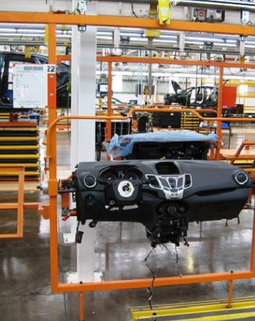Delve into the evolving landscape of the automotive industry in Bangladesh, examining the role of artificial intelligence (AI) as a double-edged sword – a blessing and a threat.
1. Introduction: Navigating The Intersection Of Ai And Automobiles
The automotive industry in Bangladesh is undergoing a profound transformation, driven by technological advancements and the integration of artificial intelligence (AI) into vehicles. While AI presents unprecedented opportunities for innovation and efficiency, it also poses challenges and disruptions to traditional business models. In this article, we explore the implications of AI on the automotive industry in Bangladesh, examining its role as both a blessing and a threat.
2. The Rise Of Ai In Automobiles
Artificial intelligence is revolutionizing the automotive industry, enabling vehicles to become smarter, safer, and more efficient than ever before. AI-powered technologies such as advanced driver-assistance systems (ADAS), autonomous driving features, and predictive maintenance algorithms are reshaping the driving experience and transforming the way vehicles are designed, manufactured, and operated. From self-driving cars to connected vehicles, AI is driving innovation and ushering in a new era of mobility in Bangladesh.
3. Ai As A Blessing: Opportunities For Innovation
AI offers numerous benefits to the automotive industry, providing opportunities for innovation, optimization, and customization. By leveraging AI algorithms and machine learning techniques, automakers can enhance vehicle performance, improve fuel efficiency, and optimize route planning for commercial fleets. Moreover, AI-powered predictive maintenance systems can proactively identify and address potential issues before they escalate, minimizing downtime and reducing maintenance costs for vehicle owners and operators.
4. Ai As A Threat: Challenges And Disruptions
Despite its transformative potential, AI also poses challenges and disruptions to the traditional automotive ecosystem in Bangladesh. The integration of AI technologies requires substantial investment in research, development, and infrastructure, which may pose financial barriers for smaller manufacturers and startups. Moreover, concerns about data privacy, cybersecurity, and ethical implications of AI-driven decision-making raise questions about regulatory frameworks and consumer trust in autonomous vehicles.
5. Navigating The Future: Strategies For Success
To harness the potential of AI while mitigating its risks, stakeholders in the automotive industry must adopt strategic approaches to innovation and adaptation. This includes investing in research and development to enhance AI capabilities, collaborating with technology partners and startups to leverage expertise and resources, and fostering a culture of continuous learning and adaptation to navigate the evolving landscape of AI-driven mobility.
6. Conclusion: Embracing The Promise Of Ai
In conclusion, the integration of artificial intelligence into the automotive industry presents both opportunities and challenges for stakeholders in Bangladesh. By embracing AI as a catalyst for innovation and transformation, automakers, suppliers, and policymakers can unlock new possibilities for efficiency, safety, and sustainability in the automotive ecosystem. However, navigating the complexities of AI requires proactive strategies, collaboration, and regulatory frameworks to ensure that the benefits of AI are maximized while addressing its potential risks and challenges.





